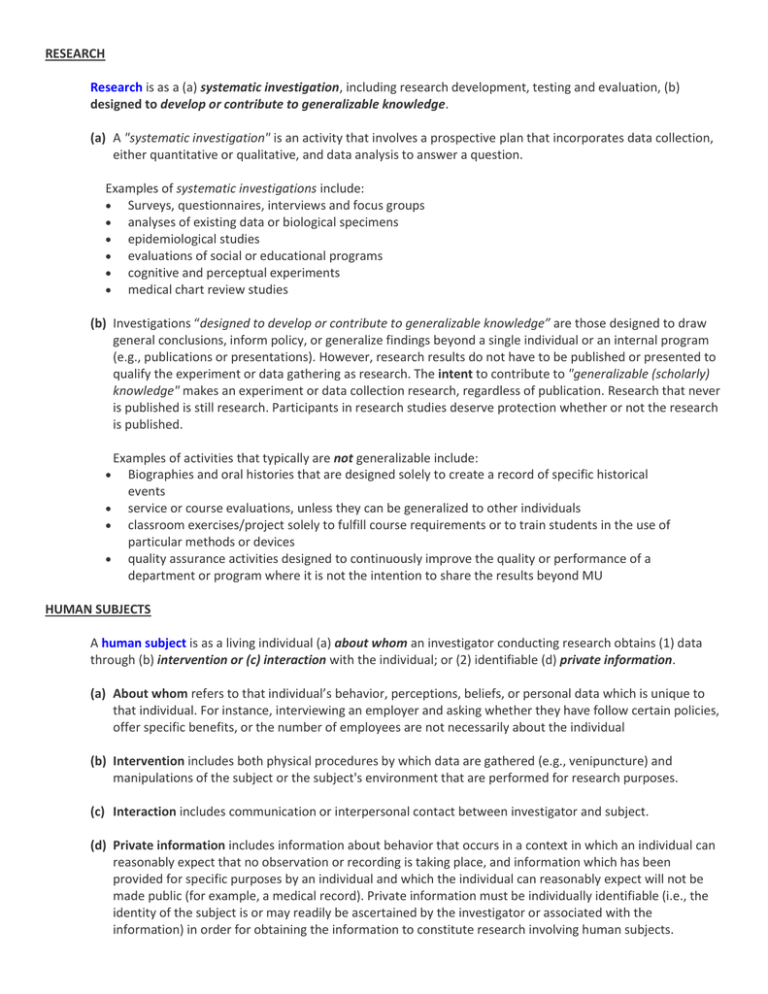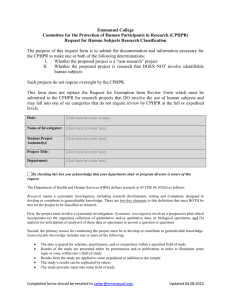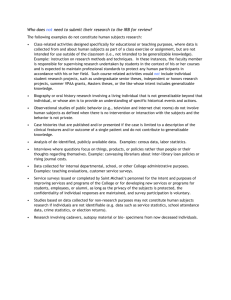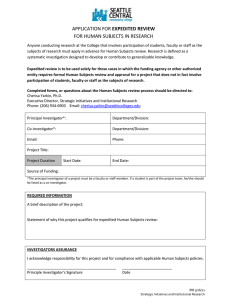human subject and research
advertisement

RESEARCH Research is as a (a) systematic investigation, including research development, testing and evaluation, (b) designed to develop or contribute to generalizable knowledge. (a) A "systematic investigation" is an activity that involves a prospective plan that incorporates data collection, either quantitative or qualitative, and data analysis to answer a question. Examples of systematic investigations include: Surveys, questionnaires, interviews and focus groups analyses of existing data or biological specimens epidemiological studies evaluations of social or educational programs cognitive and perceptual experiments medical chart review studies (b) Investigations “designed to develop or contribute to generalizable knowledge” are those designed to draw general conclusions, inform policy, or generalize findings beyond a single individual or an internal program (e.g., publications or presentations). However, research results do not have to be published or presented to qualify the experiment or data gathering as research. The intent to contribute to "generalizable (scholarly) knowledge" makes an experiment or data collection research, regardless of publication. Research that never is published is still research. Participants in research studies deserve protection whether or not the research is published. Examples of activities that typically are not generalizable include: Biographies and oral histories that are designed solely to create a record of specific historical events service or course evaluations, unless they can be generalized to other individuals classroom exercises/project solely to fulfill course requirements or to train students in the use of particular methods or devices quality assurance activities designed to continuously improve the quality or performance of a department or program where it is not the intention to share the results beyond MU HUMAN SUBJECTS A human subject is as a living individual (a) about whom an investigator conducting research obtains (1) data through (b) intervention or (c) interaction with the individual; or (2) identifiable (d) private information. (a) About whom refers to that individual’s behavior, perceptions, beliefs, or personal data which is unique to that individual. For instance, interviewing an employer and asking whether they have follow certain policies, offer specific benefits, or the number of employees are not necessarily about the individual (b) Intervention includes both physical procedures by which data are gathered (e.g., venipuncture) and manipulations of the subject or the subject's environment that are performed for research purposes. (c) Interaction includes communication or interpersonal contact between investigator and subject. (d) Private information includes information about behavior that occurs in a context in which an individual can reasonably expect that no observation or recording is taking place, and information which has been provided for specific purposes by an individual and which the individual can reasonably expect will not be made public (for example, a medical record). Private information must be individually identifiable (i.e., the identity of the subject is or may readily be ascertained by the investigator or associated with the information) in order for obtaining the information to constitute research involving human subjects.






